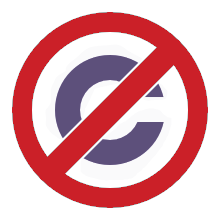namaroopa, oh! Not black/brown…
namaroopa,
oh! Not black/brown people at Jonestown (mostly). That assumption is totally incorrect, which is why we’re sort of talking about the event in different languages here.
This isn’t my understanding of the demographics at Jonestown. It’s certainly true that press coverage after the November 18 focused disproportionately on Jim Jones, survivors from the mostly white church leadership, and the mainly white, affluent “Concerned Relatives.” But the sensationalist press coverage was wrong to treat their stories as representative of the People’s Temple or Jonestown as a whole. According to Paul VanDeCarr, 70 per cent of the people at Jonestown were Black. Browsing through the photos on this list of the dead, I’m pretty sure that’s accurate.
Rad Geek: the people at Jonestown very much knew they were drinking poison and had rehearsals for and debates about it, although a few members did resist and were coerced at various stages. People in totalist authoritarian cults don’t sit around wishing they could escape, especially not the kids – they’d get hurt way too easily in a totalist setting if they adopted forms of psychological resistance that are more tolerable in mainstream society.
Well. About 80 people did escape from Jonestown — 16 of them were trying to leave with Ryan when he was murdered, but weren’t killed in the attack, and the other 60-odd people escaped into the woods. That’s a small percentage — less than 1% of the population at Jonestown — but it is important that even amongst able-bodied adults the decision was far from unanimous.
In any case, though, I’m not sure I understand your argument. I agree that several hundred people at Jonestown chose to commit suicide. But a number of the seniors receiving medical care at Jonestown were apparently poisoned in their sleep, not at the “White Night” assembly with the poisoned Flavor-Aid. And I don’t think it’s reasonable to claim that infants or young children understood that the Flavor-Aid they were given by their parents was poisoned, or to make an informed decision about whether or not to commit “revolutionary suicide.” (The infants and toddlers had the poison squirted down their throats with syringes.) Since we’re already talking about several hundred people who were simply murdered by another person, the frequent use of the term “mass suicide” to describe Jonestown is seriously misleading.
Any discussion of physical/psychological agency HAS to be more complicated than what happened on the day they died.
I certainly agree with you about this. (In fact I pretty much detest the use of the term “brainwashing” to apply to anything other than the military torture cases it was invented to describe, and I think it papers over very complicated and important questions.) But my objections to the treatment of Jonestown as a “mass suicide” don’t have to do with any theory about the people who made a knowing choice to “drink the Kool-Aid,” as they say. They have to do with the way in which that description focuses on the conscious decisions of those adults who were in a position to make conscious decisions about whether to live or to commit suicide. It’s misleading because it blanks out what happened to several hundred people who were not in a position to have any agency in the decision, whether complicated or simple, either because their parents decided for them, or because they were killed in their sleep.
 Anticopyright.
Anticopyright.